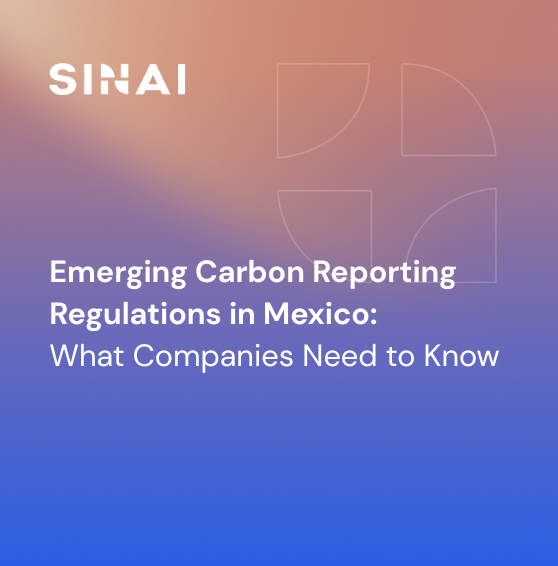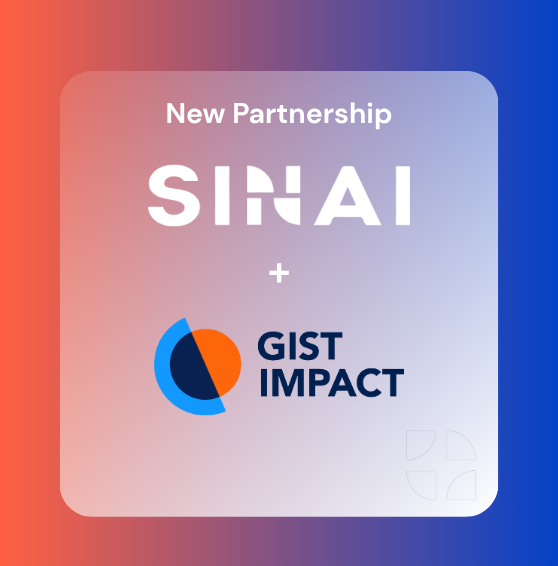
Decarb Dive: Interview with ESG Leader Chris Librie, Semiconductor Industry
It’s almost like, if you’re a fan of Spider Man, “With great power comes great responsibility.” So, our responsibility is to do something to decarbonize the value chain. We want to continue making and selling our essential products, but we also want the process to be more efficient.
Can you tell us about your professional climate journey?
I didn’t start my career in sustainability, and I think that’s a strength I bring to this work. I worked in marketing and general management roles for companies like Unilever and SC Johnson - so I had a more business background that I then brought into sustainability.
When I moved into sustainability with SC Johnson, I decided I wanted to learn about the technical side of my role. I became a member of the team at the World Resources Institute that published the Scope 3 Protocol. We conducted the first-ever Scope 3 analysis of SC Johnson’s business.
And when I moved to HP, I had a similar role there, but the company was on a much bigger scale. The business involved everything from paper to data centers. So the complexity of measuring their Scope 3 was considerable. Not only did we publish a Scope 3 analysis, but we also published an accounting manual outlining how we did the analysis, our assumptions, etc. We had the data assured by a third party. Meg Whitman, who was then the CEO of HP, always said, “You can’t manage what you don’t measure.”
I joined Applied Materials in 2020. And soon after we announced a new framework that we’re really excited about - 1x, 100x, 10000x - these three pillars represent our operations, our value chain, and the impact of the electronics industry globally. So 1x represents Scopes 1 & 2, 100x is Scope 3, and I’m not sure what 10000x is because we don’t really have a Scope 4, yet. But the idea is to go beyond our value chain. And we’ve set goals against each of those pillars. Like 100% renewable energy globally by 2030, which represents the 1x. We just set Science Based targets, including Scope 3, so that’s the 100x. And then we’re looking at Net Zero, but we would prefer not to make a commitment there until we have a clear plan and have aligned all our resources to deliver the plan.
With Applied Materials, what did you learn in 2022 and what are your goals for 2023?
A big goal for us this year is to improve our measurement of Scope 3. We’ve taken 2019 as our baseline year. Once we established our baseline, we want to fill in the gaps in our Scope 3 analysis. We’ve had to use some estimations, like economic input/output modeling for Category 1 of Scope 3, because we didn’t have primary data from our suppliers. And with Scope 3, you really want to get primary data wherever you can. And then we can work with suppliers to reduce their impact. We have a team on the supply chain side of the organization that my team works closely with to make this happen.
So, what have we learned? That our Scope 3 is 100x our Scopes 1 and 2 combined. And that within our Scope 3 15% is Category 1,Purchased Goods & Services, and 80% is Category 11, Use of Sold Products. We do have a program, 3 by 30, which aims to reduce the impact of our tools by 30% by 2030. That program is on track but it’s still not enough. Really what we need to do is work with our suppliers and customers to reduce their footprint.
One thing I’m excited about is our role in the Semiconductor Climate Consortium, which is an organization of semiconductor companies and equipment manufacturers working together to decarbonize the semiconductor value chain. The SCC has over 70 members covering the full supply chain from our suppliers, through to device manufacturers – it’s the 1x/100x/10,000x framework in real life!
For smaller teams, do you have any tips for working with suppliers around Scope 3 reduction?
Most companies operate through a combination of carrots and sticks. We’re more carrot oriented, because we think a) that gets better results and b) we’re in a supply-challenged environment right now. There’s a high demand for our products, and thus a high demand for our suppliers. First, we believe reducing their Scopes 1 and 2 has a cost savings benefit to them. Second, we believe emissions reduction has significant value for our investors, and our suppliers’ investors. Third, we have experience reducing our Scope 1 and 2 footprints, so we can share that knowledge with them.
Are there specific software or tactics you’d recommend to others?
If you’re a global, complex company, you need a tool to capture spend and emissions at each subsidiary. We have a system that our teams are all trained in. Typically, at the end of our fiscal year, we collect that data from our subsidiaries. That’s Scope 1 and 2.
For Scope 3, we’re currently doing things on Excel. Honestly, that’s less than ideal. And we’re trying to figure out ways to improve the process. As an example, with Category 11, we know what we sold, what its impacts are, where it went, its length of life… all those factors could be systemized rather than doing it on Excel.
What are some of the opportunities or challenges that make the Semiconductor industry unique when it comes to decarbonization?
Well, we wouldn’t be able to achieve progress in climate change without semiconductors. They are essential to efficiency, measurement, and analysis. You can’t run a renewable energy facility without them. It’s almost like, if you’re a fan of Spider Man, “With great power comes great responsibility.” So, our responsibility is to do something to decarbonize the value chain. We want to continue making and selling our essential products, but we also want the process to be more efficient.
There are already companies thinking about building their fabs (fabrication plants) next to renewable energy facilities. Samsung is building a new fab in Texas and they’re building it near a place where they can also have a wind farm. Micron, another chip manufacturer, has announced a new fab in Idaho, again near a wind farm. So, I think this idea of linking the production of semiconductors to the production of renewable energy is gaining momentum.
How important is the connection between the goals of the ESG / Sustainability team and the goals of the overall business? Are you seeing that trending in a certain direction over your career?
I like to joke that 10 years ago I couldn’t buy a meeting with our Investor Relations team. Fast forward to today, I speak with our Investor Relations team and investors more than 50 times a year. So that’s a big change. I think the quest that people like me have been on for a while is to demonstrate the business value of ESG, so this is good progress.
Another thing is that most ESG teams are relatively small. I always say ESG is a team sport - we have to influence and work with a lot of other groups at an organization. Back to the Scope 3 category conversation, we have a team in supply chain that’s helping us, we have a team in R&D that’s helping us, and we’re working with facilities and labs that have an impact on our operational footprint, so all these teams play important roles in our work.
Lastly, are there conferences or other forums for ESG/Sustainability folks in the Electronics sector that you recommend?
One thing everyone should think about joining is RE100, which is associated with Climate Week in NYC. That’s probably the premier event for making meaningful connections. Another organization is CEBA, which brings together companies that are interested in buying clean energy. Those are two I’d highly recommend.
An industry consortium, like the Semi Climate Consortium, is a pioneering idea, though. Because really what it’s doing is embracing the importance of Scope 3. What it all comes down to is, our supplier’s Scope 2 is our Scope 3; our customer’s Scope 2 in also our Scope 3. We need to work together. If you don’t have that collaborative, industry approach to decarbonization it’s very difficult to do it on your own.
About Chris Librie:
Chris Librie is Applied Material’s senior director of ESG. In that role, Chris is responsible for accelerating the company’s environmental, social and governance programs while communicating these to external stakeholders.During his tenure, Chris has expanded the central ESG team, taking on responsibility for driving Applied’s climate strategy - including RE100 and science-based targets (SBTS). He leads the company’s ESG Leadership Council, comprised of executives from business units and functions responsible for driving Applied’s programs. Chris reports on progress quarterly to the CEO and executive leadership team as well as to the Applied Board of Directors. Chris has overseen the production of three annual sustainability reports detailing Applied’s environmental, social and governance (ESG) programs and results. He also represents the company regularly in public forums and meetings with investors.
Prior to Applied, Chris most recently served as director of corporate social responsibility at Samsung Semiconductor, Inc. where he led the company’s social investments and its regional response to the COVID-19 pandemic. Previously, Chris led ESG and corporate sustainability programs at eBay Inc. and HP Inc., helping both organizations improve their ESG performance and reporting while achieving the highest recognition from leading external organizations including CDP.
Chris holds an MBA from the University of Edinburgh and an undergraduate degree in history from the University of Pennsylvania.
About SINAI Technologies:
SINAI Technologies Inc. is the planet's leading Decarbonization Intelligence platform, built to help organizations to build decarbonization strategies. Our decarbonization platform enables more intelligent carbon emission measurement, reporting, mitigation and scenario analysis for organizations using science-based methodologies. To learn more, visit: www.sinai.com or follow us on Twitter @SINAICarbonTech or LinkedIn @SINAI Technologies Inc.

%20(7).png)









